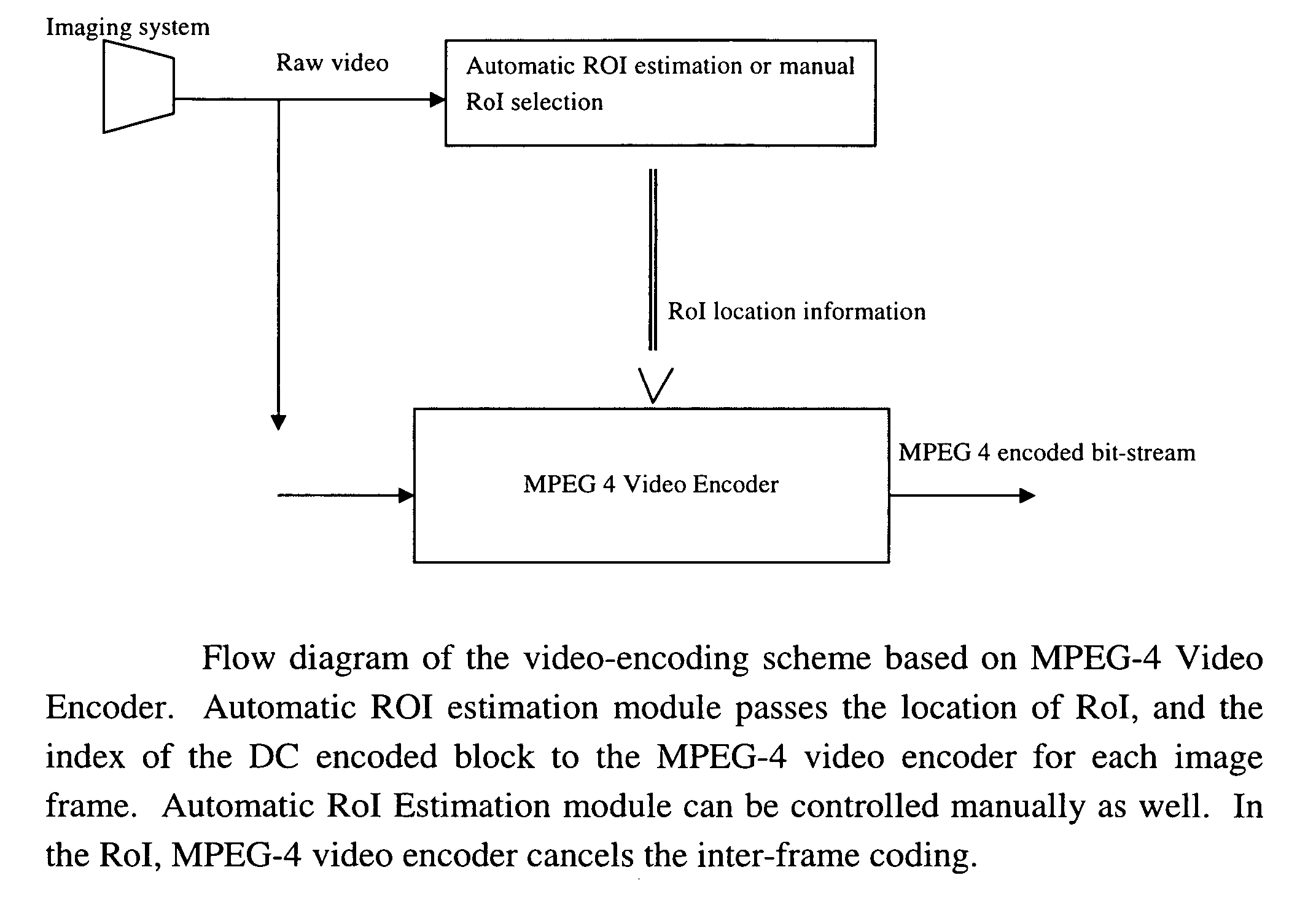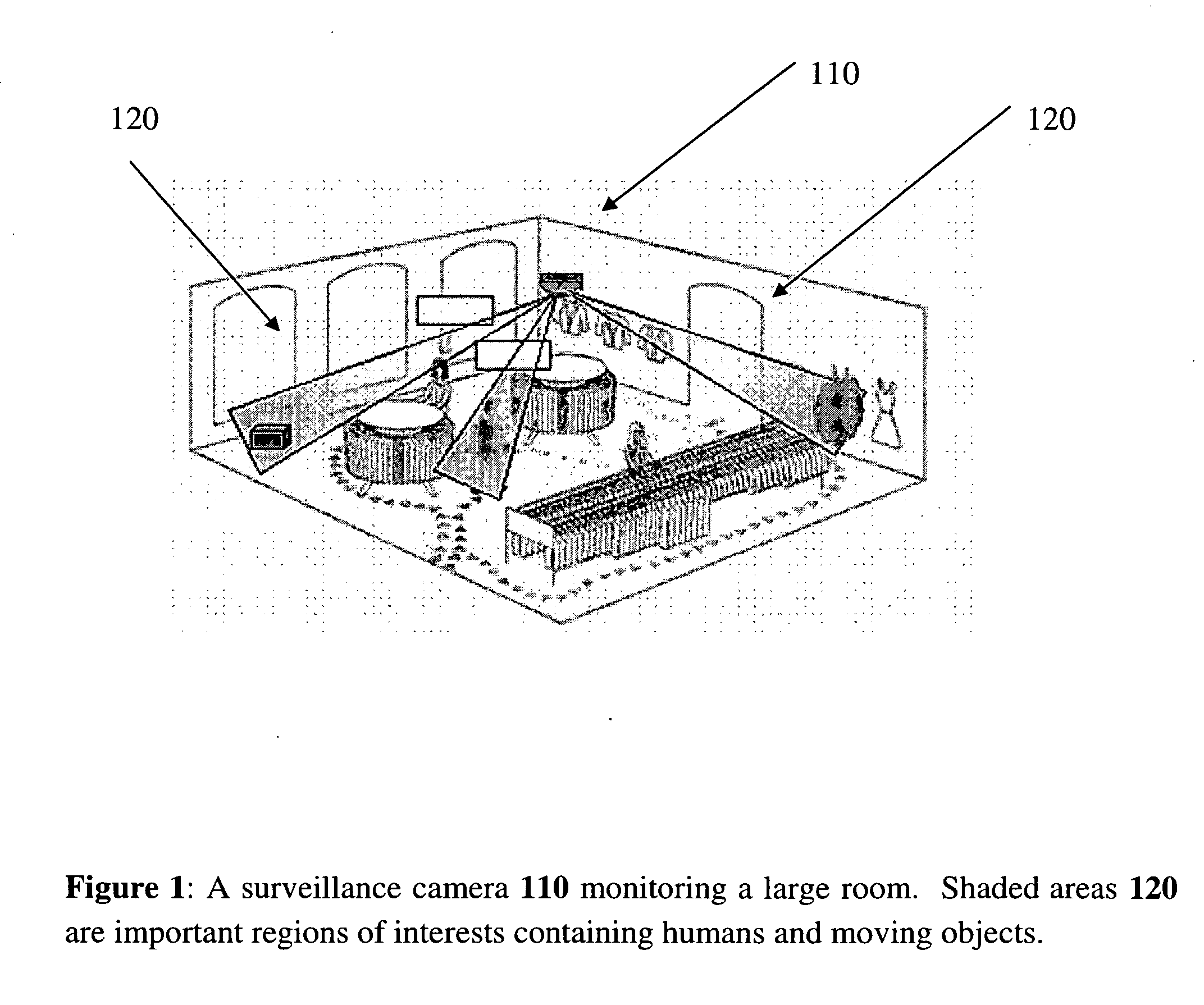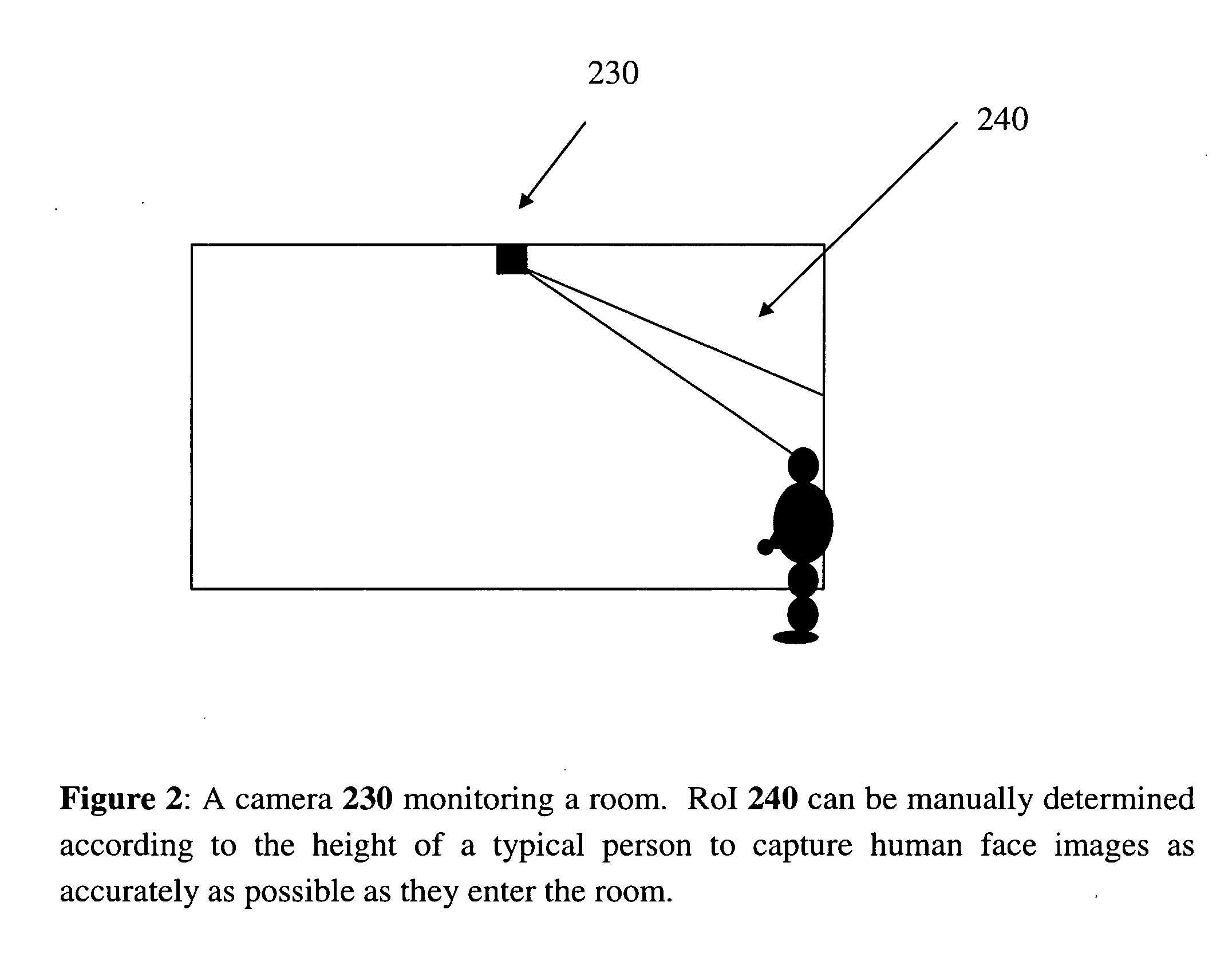Region-sensitive compression of digital video
a region-sensitive compression and video technology, applied in the field of system and method for encoding and decoding video signals, can solve the problems of ineffective compression of video produced by such a camera system, the substantial bit rate implied by the raw video stream, and the inability of ordinary video encoding methods to effectively compress the video, so as to reduce the amount of data for transmission or storage, reduce the high frequency content of the image, and reduce the complexity of the video encoding system
- Summary
- Abstract
- Description
- Claims
- Application Information
AI Technical Summary
Benefits of technology
Problems solved by technology
Method used
Image
Examples
Embodiment Construction
[0030] The numerous innovative teachings of the present application will be described with particular reference to the presently preferred embodiment (by way of example, and not of limitation).
[0031] Video surveillance systems and cameras are widely used in many practical applications. A typical video signal produced by a surveillance camera consists of both foreground objects containing important information and the background, which may contain very little useful information. Current digital video recording systems use vector quantization, wavelet data compression, or Discrete Cosine Transform (DCT) based MPEG video compression standards to encode surveillance videos, which are developed for coding ordinary video. In FIG. 1 a wide-angle camera 110 monitoring a large room is shown. Shaded areas 120 are important regions of interests containing humans and moving objects. In some embodiments such RoIs can be automatically defined by a motion-detection or object-tracking algorithms. ...
PUM
 Login to View More
Login to View More Abstract
Description
Claims
Application Information
 Login to View More
Login to View More - R&D
- Intellectual Property
- Life Sciences
- Materials
- Tech Scout
- Unparalleled Data Quality
- Higher Quality Content
- 60% Fewer Hallucinations
Browse by: Latest US Patents, China's latest patents, Technical Efficacy Thesaurus, Application Domain, Technology Topic, Popular Technical Reports.
© 2025 PatSnap. All rights reserved.Legal|Privacy policy|Modern Slavery Act Transparency Statement|Sitemap|About US| Contact US: help@patsnap.com



